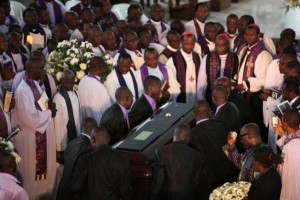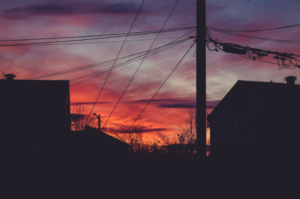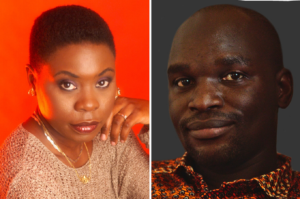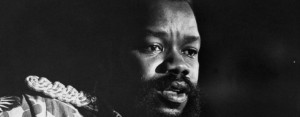 The chances are that you attempted to read “Elegy for a Nation,” the poem Soyinka published in the Nigerian Guardian in honor of Achebe on the day of his funeral. You scrolled down and estimated that the entire poem was about 300-line long, plus you spied the word “catafalque” in the first stanza and “caryatid” in the last stanza and figured you’d be required to make countless trips to dictionary.com. At that very moment, your attention was conveniently distracted by some other thing. Don’t beat yourself up. It’s all Soyinka’s fault really. The man is still the bloody literary snob he always was. He writes these snooty poems pretending not to know that the average Nigerian literary consumption is limited to writings ranging from PSquare lyrics to Linda Ikeji’s blog.
The chances are that you attempted to read “Elegy for a Nation,” the poem Soyinka published in the Nigerian Guardian in honor of Achebe on the day of his funeral. You scrolled down and estimated that the entire poem was about 300-line long, plus you spied the word “catafalque” in the first stanza and “caryatid” in the last stanza and figured you’d be required to make countless trips to dictionary.com. At that very moment, your attention was conveniently distracted by some other thing. Don’t beat yourself up. It’s all Soyinka’s fault really. The man is still the bloody literary snob he always was. He writes these snooty poems pretending not to know that the average Nigerian literary consumption is limited to writings ranging from PSquare lyrics to Linda Ikeji’s blog.
But don’t despair. The key to understanding and loving a poem is cracking its secret code. In what follows, I give a few clues to help you do just that.
What is an Elegy? Soyinka gives you the first key to understanding the poem in the title. An elegy is a poem lamenting or mourning the loss or death of something or someone. Remember the last time you lost your favorite lipstick and couldn’t shut up about what was so great about the lipstick, how it got lost, and how it sucked that you had no way of replacing it? Expect to find pretty much the same information in Soyinka’s poem. A nation has died, and Soyinka is mourning its loss. But why is the poem about the nation, you might ask. Is the nation a metaphor for Achebe? Yes and no. I’ll come to that later.
The Plotted Poem: It helps in reading a poem to think of it as a story. We already know that the character in Soyinka’s poem is the nation, Nigeria. But poems are naturally very tricky things. If you go ransacking through Soyinka’s poem for a nation of 140 million people, perched up on latidude 9 North and that goes by the name Nigeria, you won’t find it. In Soyinka’s poem, Nigeria is the principal character, but it’s been disguised as a monster. We know this because at some point in the beginning Soyinka says: “For if Leviathan is dead, we are the maggots/ Probing still her monstrous womb.” Soyinka is imagining Nigeria as some kind of creature, a monster, dead but still living. Since every monster has a story, Soyinka has to go back in time to show us how Nigeria was initially dreamed of as something beautiful and how it became a wormy Leviathan.
Staging the Poem: In any story, setting is key. Imagine Soyinka standing before the lifeless body of the monster, the Leviathan who represents the nation. From this position, he is addressing Achebe, telling him what he observes. The body is lying still in a catafalque, a platform where a body is placed to lie in state. It looks dead except that it is singing. But Soyinka insists that the body is dead. He dares doubters to leave it in the open and see if vultures would not devour it. We keep fooling ourselves into thinking that the monster is alive, and the world humor our illusion. Their doctors—IMF, UNO, World Bank—for selfish reasons, refuse to “issue a certificate of death.” But for how long, Soyinka wonders, would the world continue to be fooled into believing that the moster is alive and well.
At some point, Soyinka considers the possibility that maybe Nigeria’s misfortune is the hand of Fate punishing him, Achebe, and their generation for daring to dream that the birth of Nigeria would be the start of something new in Africa. This is what he has in mind when he says: “Is this the price of hubris—to have dared/ Sound Renaissance bugles for a continent?/ Time was, our gazes roamed the land, godlike,/ Pronounced it good, from Lagos to Lake Chad.”
Once Upon a Time the Monster Was a Prince: Soyinka begins this story by giving us a sense of what has been lost, or rather what image of the nation Achebe and Soyinka had in mind when they and their generation dared to imagine that Nigeria was going to be a great nation. Starting from line 19, expect to see a series of striking pictures of the Nigerian past. Imagine a world spread out from coastland to savannah, ocean to sand dunes, peopled by beautiful women wearing rainbow-colored jigida beads, men wearing gold turbans and holding sparkling lances, a world ornamented with the bronzes of Ife and the Ivory of Benin, rich with the groundnut pyramids of Kano and the dye-pots of Abeokuta. Sadly, the beauty of this world is eventually lost: “Alas for lost idylls. Like Levi jeans on youth and age/ The dreams are faded, potholed at joints and even/ Milder points of stress. Ghosts are sole inheritors.”
From that point on, the poem describes the nation as the ailing remains of a faded dream. If you pay close attention, you’d hear echoes of military rule, Biafra War, the Zamfara wrist-chopping scare, and more.
Who is the Elegy for Anyway? Half way through the poem, on the last stanza of part I, Soyinka gives us a hint. It won’t be accurate to say that Achebe stands in for the nation as some kind of metaphor. Granted, there is this one moment when, directly addressing Achebe, Soyinka writes: “There sits the nation/ All faculties intact, but wheelchair bound.” However, right before we begin to imagine that there is a one to one equivalence between Achebe and the nation, Soyinka separates the two: “Your lesson of the will, alas, a creative valor/ Marks the gulf between you and that land/ We claim our own.”
“Elegy for a Nation” is a genuinely lovely poem. Read it HERE. I hope it gives you as much pleasure as it gave me.








วิธีเพิ่มความสูง April 20, 2014 16:34
You waited a lobg time to ask, then get a "yes" with that special woman. This can even have a positive effect on the assurance of a man. Established around 1985 this business hasve been designed to sell offf top quality ladies and also men garment in adition tto their owwn personal designs for example the model.